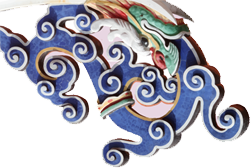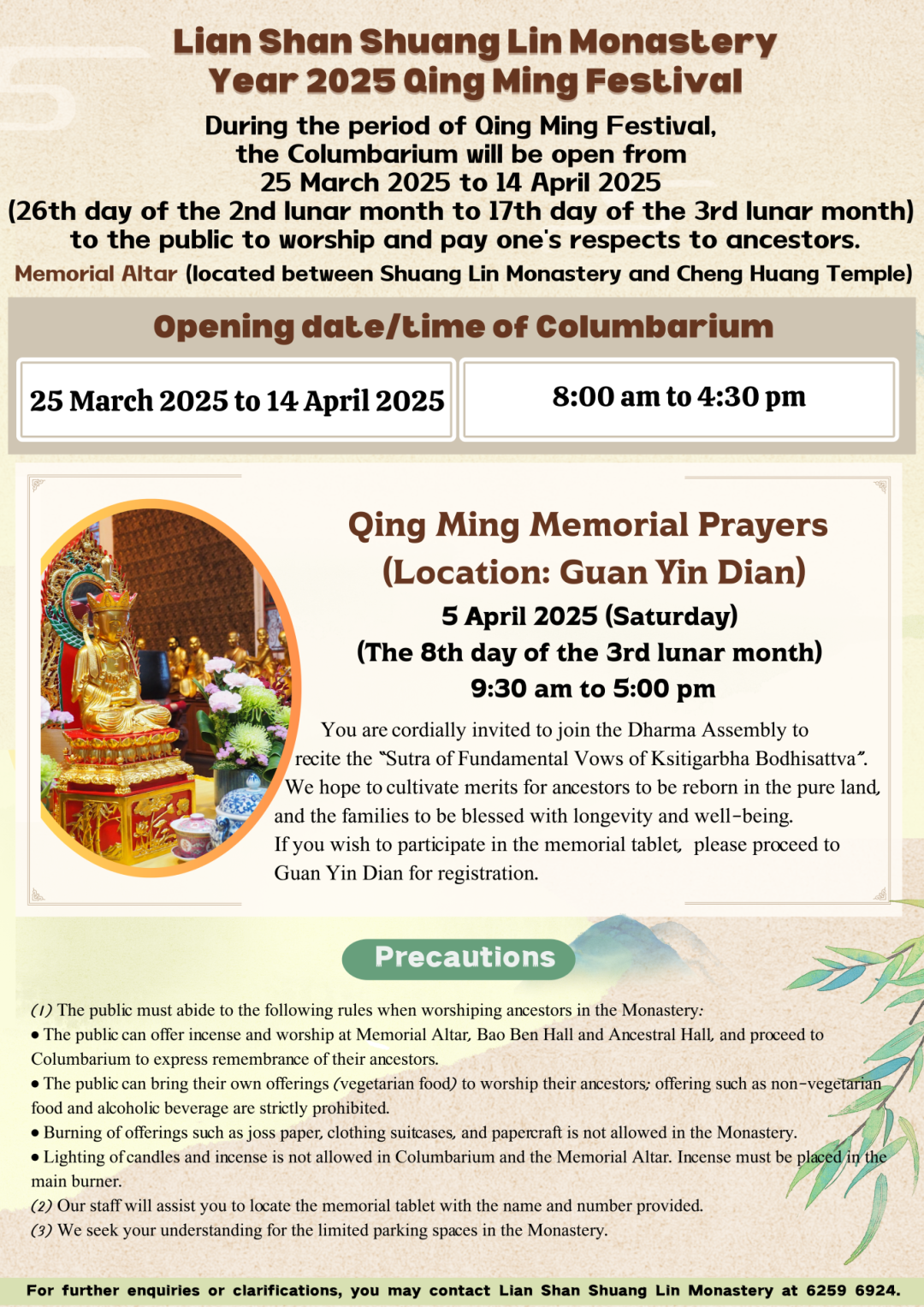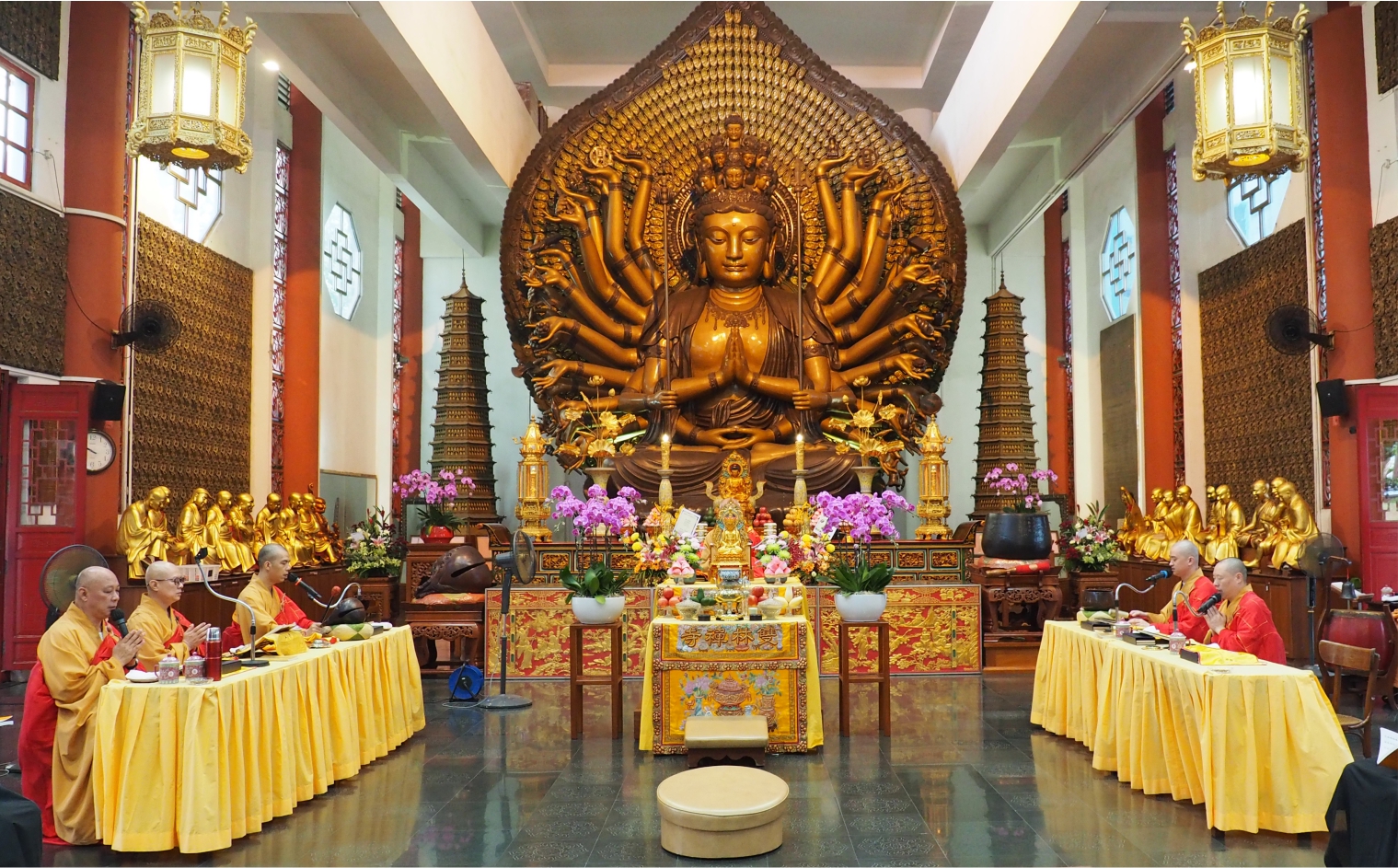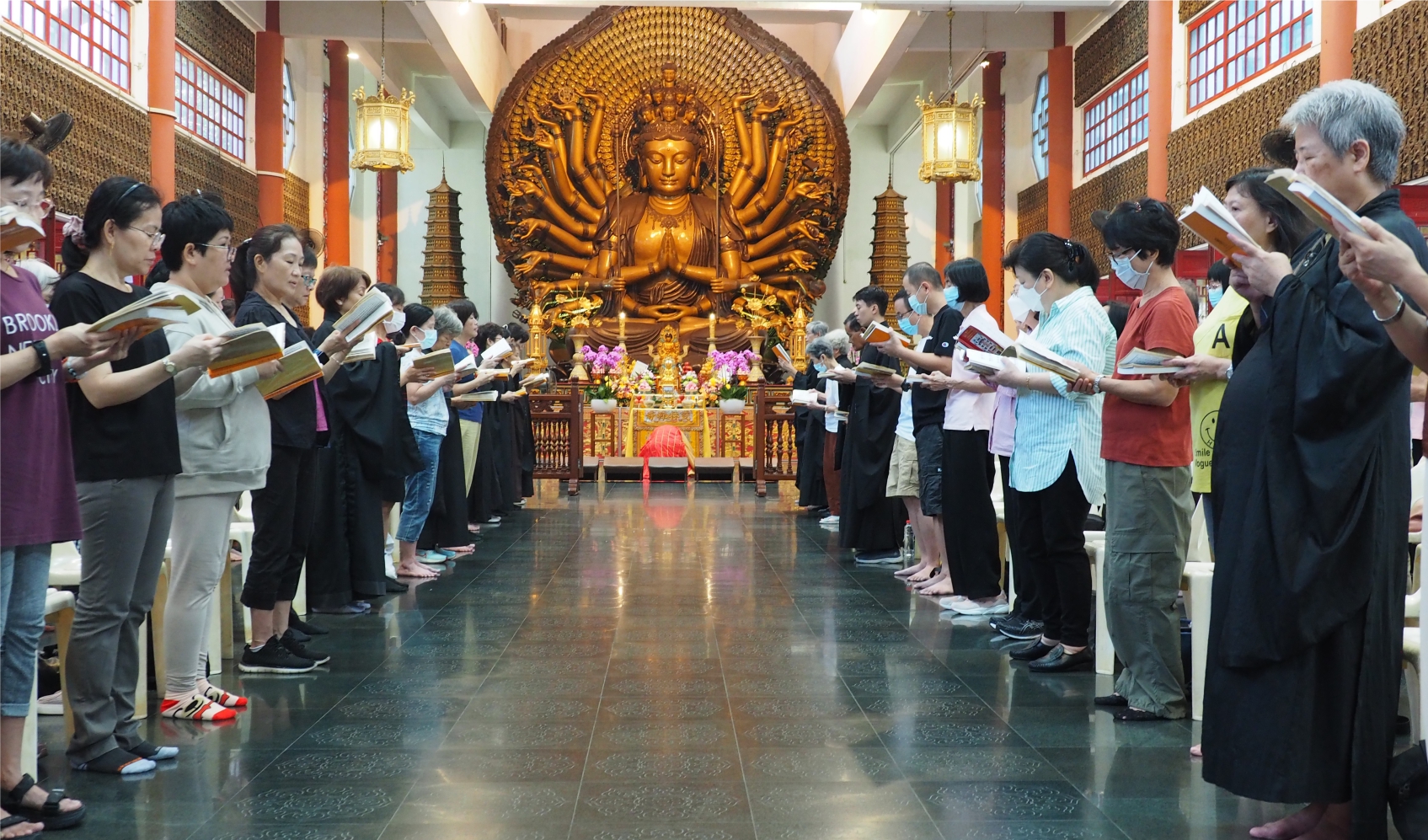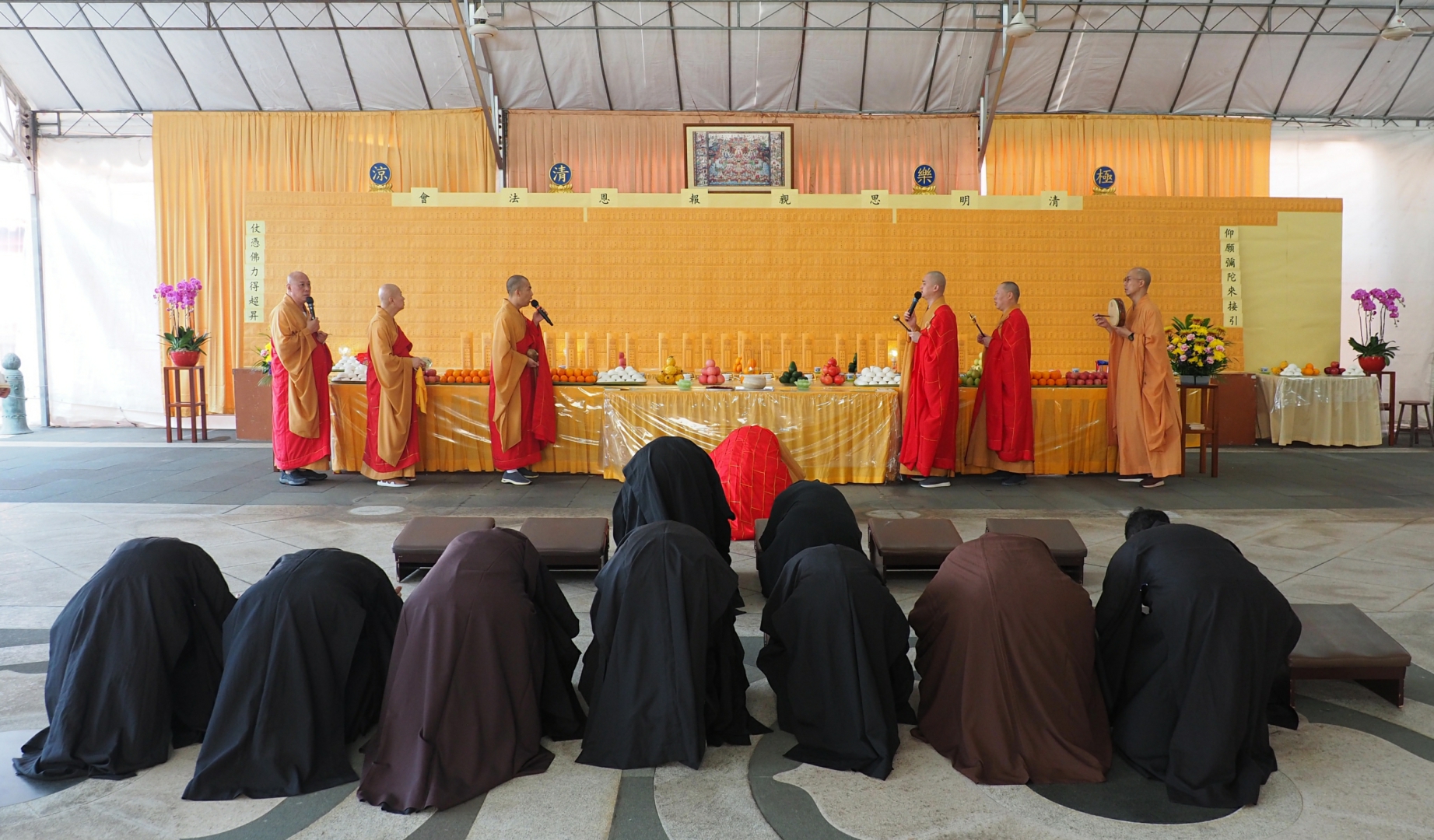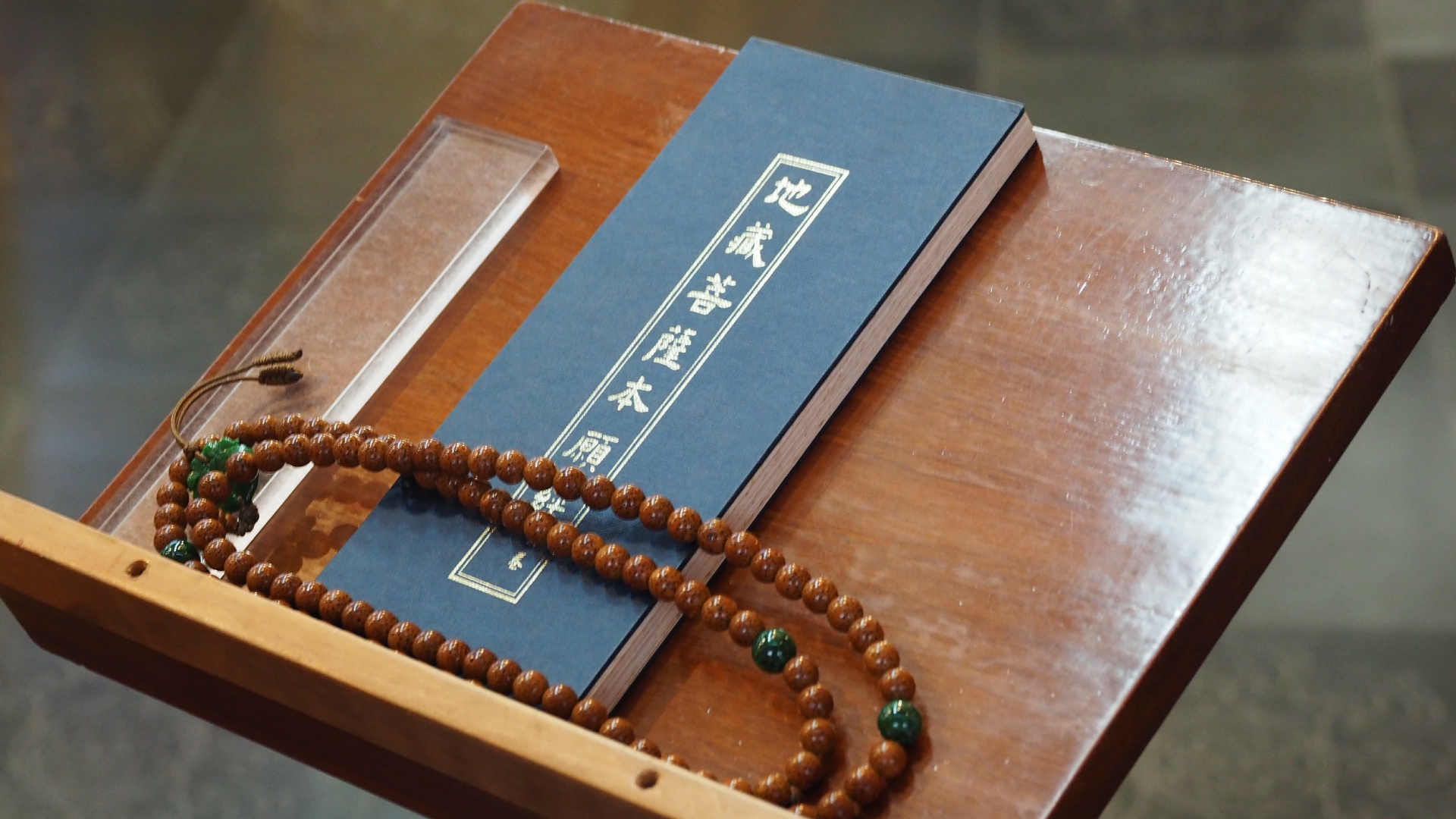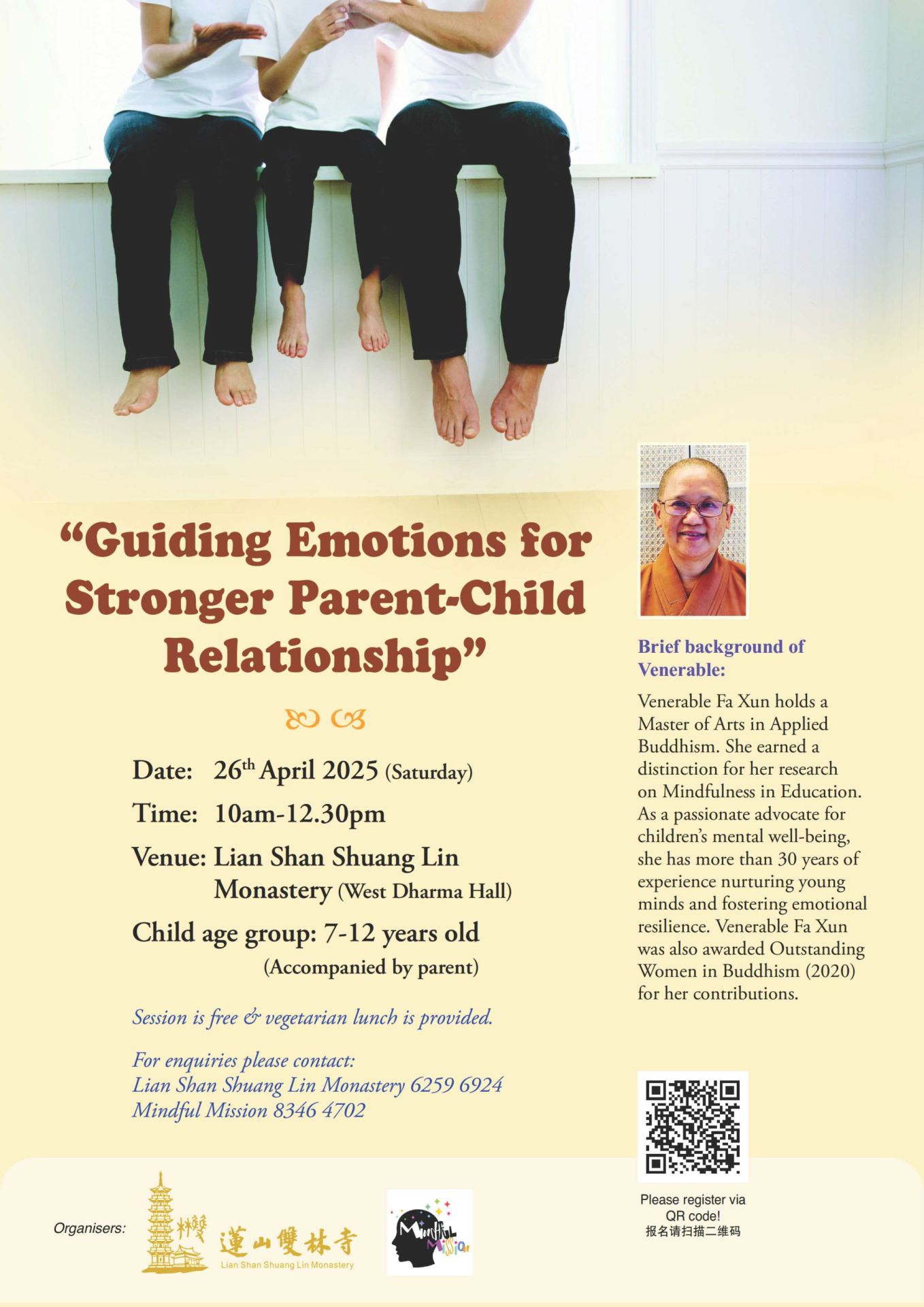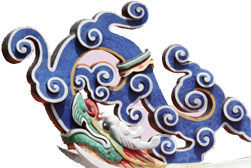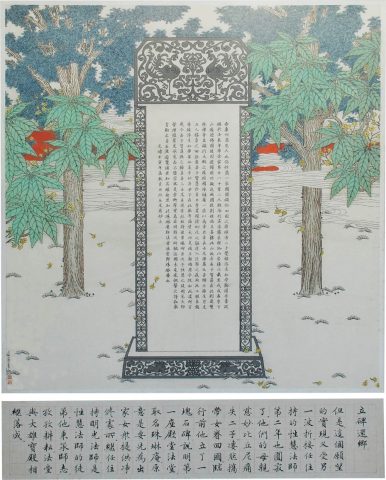
image description
However, the realization of this vision was met with another setback, as the second abbot Master Xing Hui passed away the following year (in 1902). Overwhelmed with grief of losing her son, Master Ci Miao (the mother of Master Xian Hui and Master Xing Hui) returned home with other nuns living with her. Before leaving for China, she ordered the erection of a monument where the origin of Lian Shan Shuang Lin Monastery, events concerning the first abbot and reason for the construction of Zhū Lín Temple were recorded. After Master Xing Hui’s passing, he was succeeded by his disciple Master Ming Guang who executed his teacher’s vision with diligence, thereby ensuring the completion of the Dharma hall and subsequently the Mahavira hall.


